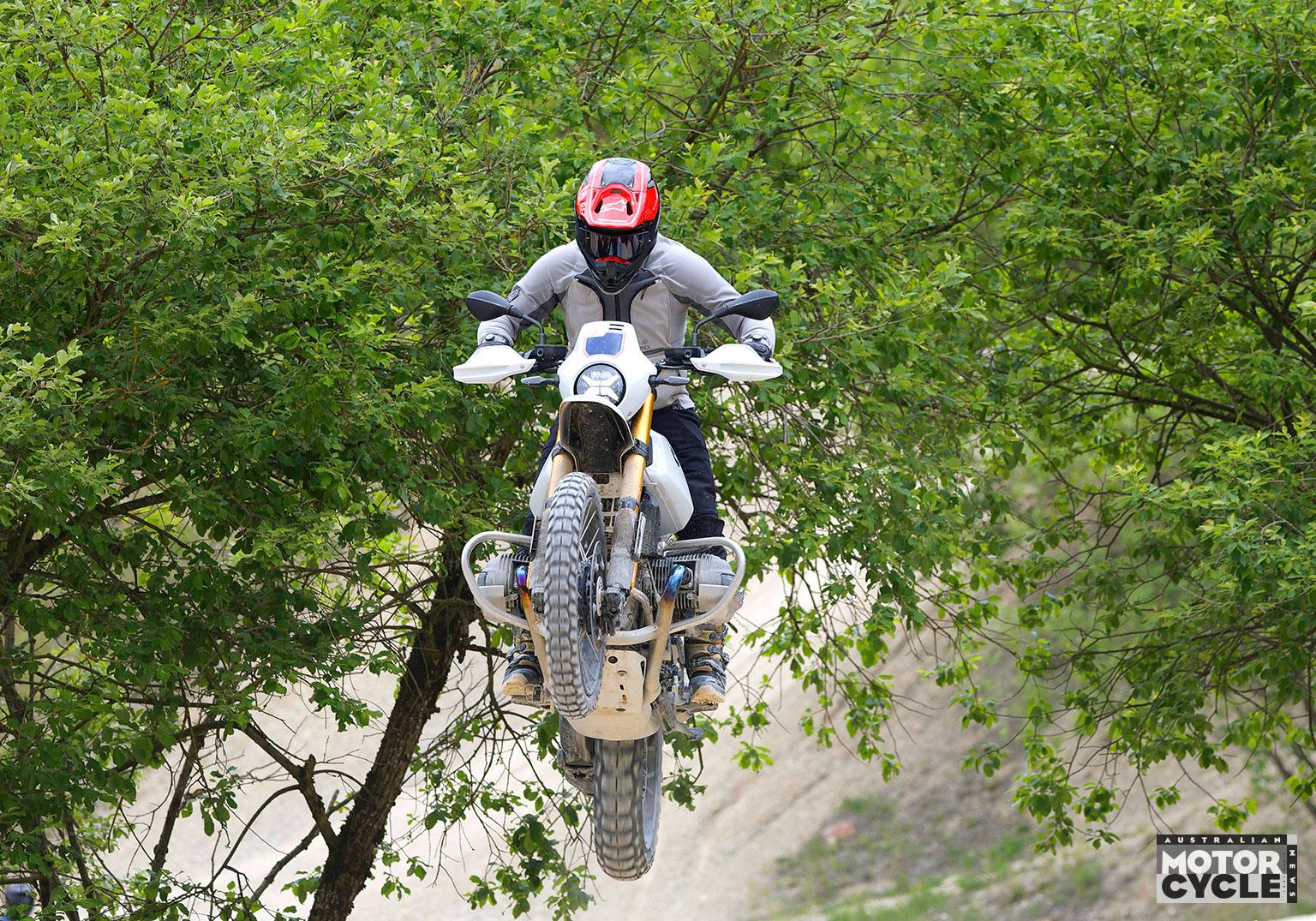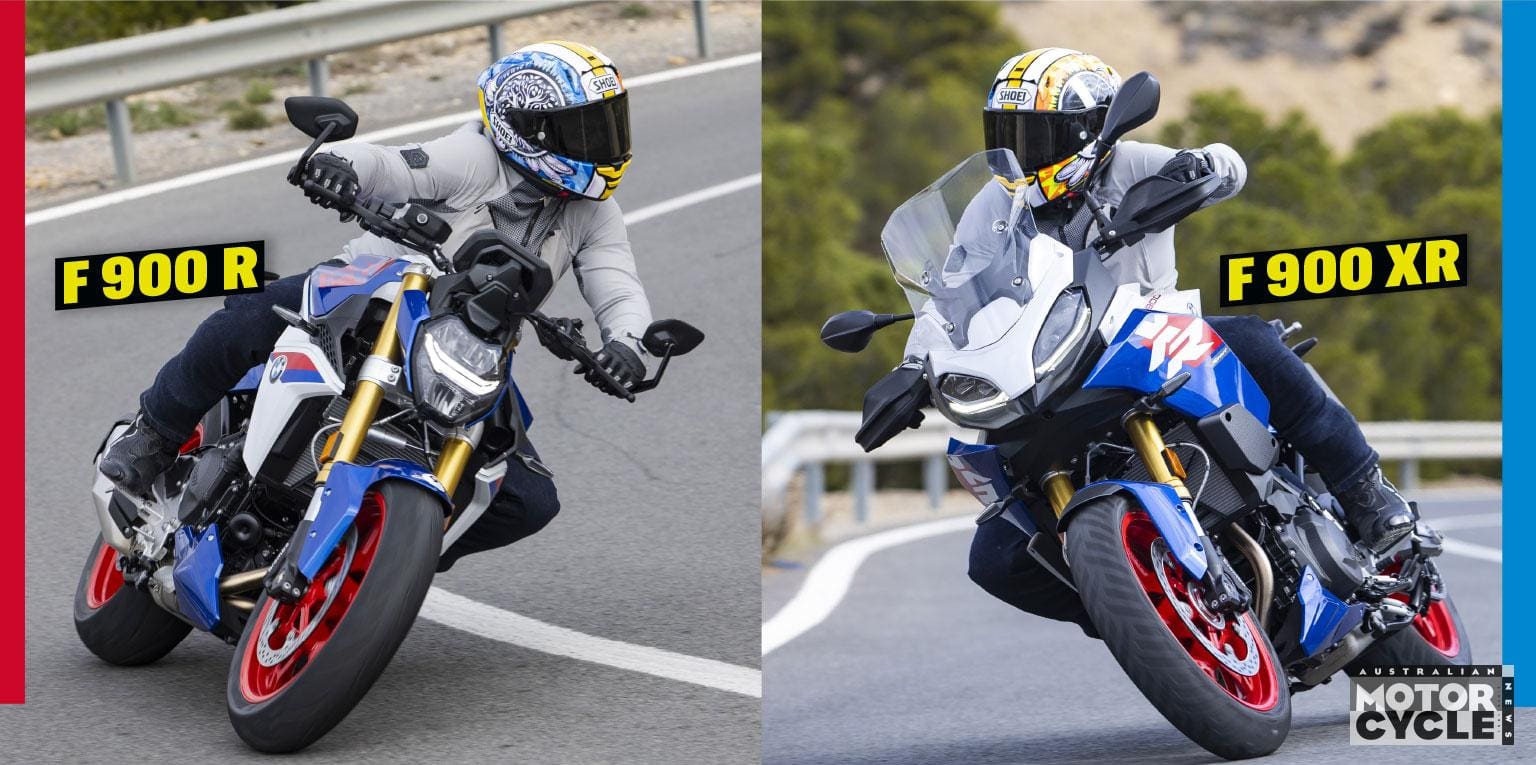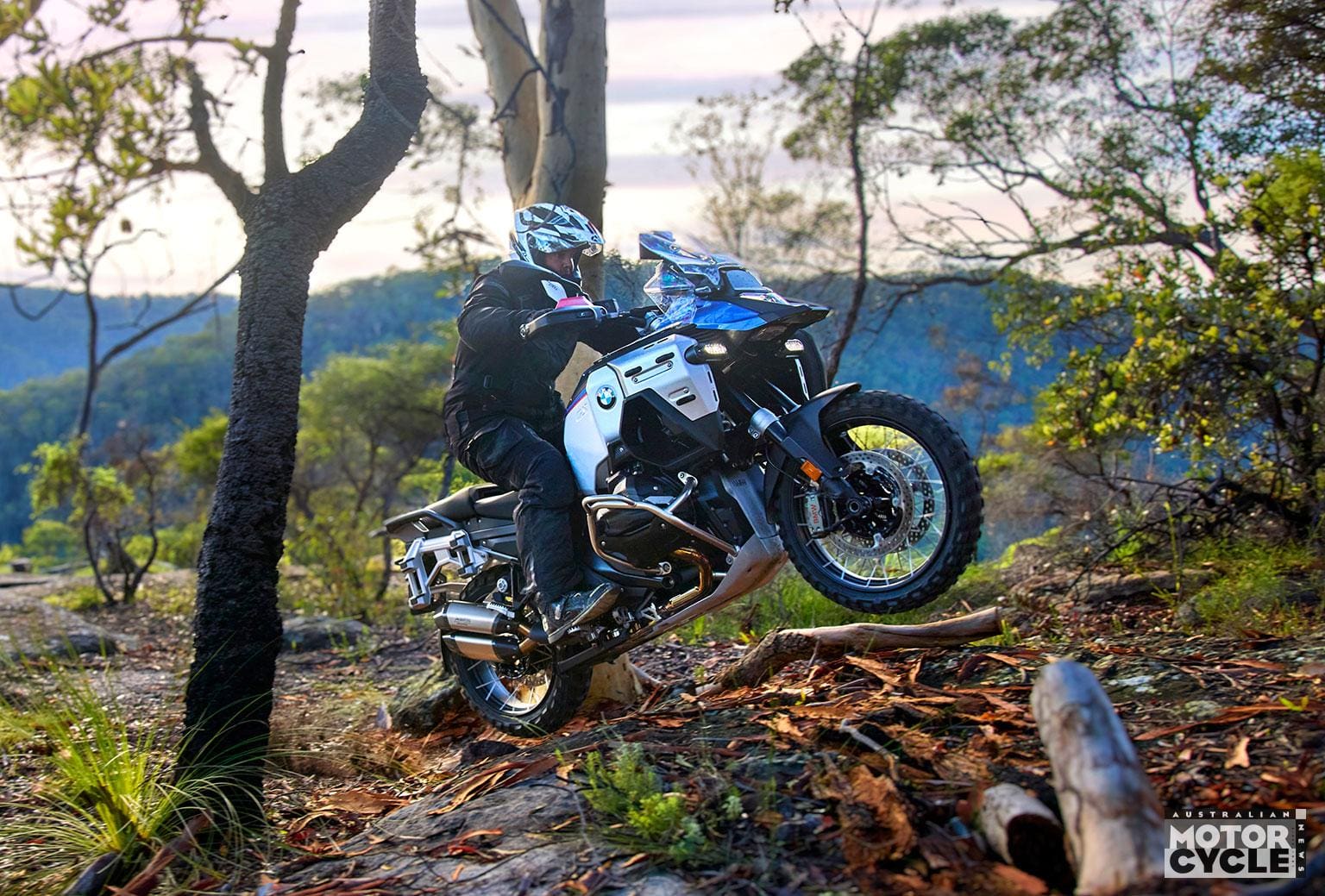While it’s a very good problem to have, the middleweight adventure bike market is a buyer’s dilemma. With offerings from KTM, Husqvarna, Honda, Suzuki, Yamaha, Triumph, Ducati, Aprilia, CFMoto and MV Augusta, the decision will come down to your budget, needs or, possibly, brand loyalty.
BMW needs no introduction to either the adventure scene or the mid-capacity class for that matter as its F 800 GS and the more recent F 850 GS have proved to be both reliable and capable all rounders for riders of all walks of life. My dad rode an early F 800 GS halfway around the world, predominately solo through some of the most remote and harsh terrain imaginable. And he did so with zero mechanical failure.
A couple of years back I was assigned the F 850 GS Adventure for the annual AMCN adventure issue and came away impressed. It was a vastly different bike to my dad’s and the few things I wasn’t so fond of on his had been improved or refined to bring this model into line with the ever evolving and improving competition.
Enter the new F 900 GS Enduro, which from a distance looks quite similar to the outgoing 850. But get up close or scan the spec sheet and you’ll soon realise BMW has gone to town in an effort to make this new model more exciting and appealing to a wider range of potential owners. And along the way it’s shed a significant 14kg and gained 15kW (20hp).

My opportunity to test the new 900 came by tagging on to BMW’s annual GS Safari for a few days. I joined around 270 other GS riders at Port Macquarie before an off-road ride to Tamworth on day one, to Yamba the next before making it to Sanctuary Cove on the Gold Coast on my third and final day. So three days of wet backroads, wet dirt roads, clay-based fire trails you could’ve ice-skated on, the occasional dry road and even a smidge of freeway thrown in for good measure – an epic ride. But more about the Safari itself in an upcoming issue. I need to tell you about this bike.
To help you understand how I formed my opinion, I’m 46-years-old and have ridden bikes my entire life. I’ve raced enduros, grass track and motocross over the years, raced (and finished) the Finke five times, and still manage a handful of enduros each year in between a heap of trail riding to keep my eye in.
I own a Suzuki GSX-R750, a Husaberg 570 and a Husqvarna FE501. I think that makes me the F 900 GS Enduro’s target market.
There are a few adventure bikes out there which claim to be many things. Clever marketing and a pro rider can do wonders for a bike’s off-road prowess but, quite honestly, I’ve been left disappointed on numerous occasions.
Leaving Port Macquarie I immediately felt at home on the 900. I had been given a thorough rundown on all of the bike’s features by BMW’s vastly experienced Miles Davis, who I was riding with for the entirety of this trip. If you’ve witnessed what this bloke can do on a motorcycle, you’ll know I was in for a wild 1300km.
When I first hit the dirt (or the road for that matter) on any unfamiliar bike, I take it pretty easy. Some bikes just feel really good straight away and I’m pleased to say that for me the 900 was one of those bikes. With 77kW (105hp) on tap power was never going to be an issue. Keeping up with Davis on some of the slipperiest clay the Mid North Coast had to offer had me a little worried at times but, unlike the weather, any concerns I had gradually dissipated.
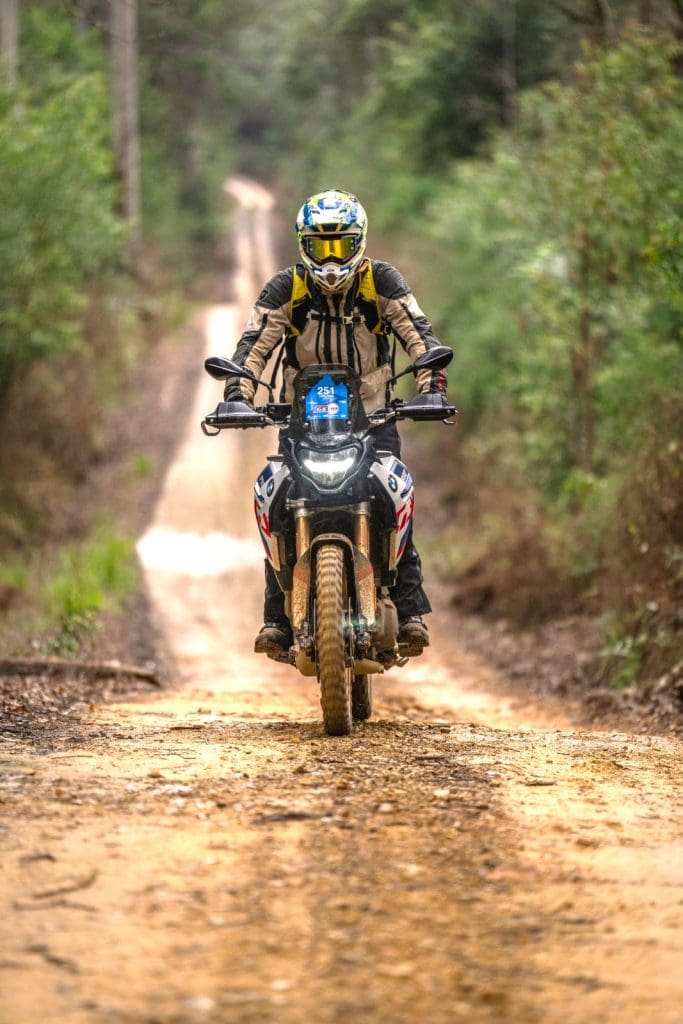
Rain is one of the five available modes selectable through the brilliant TFT display. Dynamic, Road, Enduro and Enduro Pro are the other four but, for the most part, I opted for either end of the spectrum: Rain or Enduro Pro. Switching between the two happens in seconds simply by pushing the mode button on the right-hand switchblock and closing the throttle momentarily; handy when I didn’t want to take my eyes off the trail ahead. Each mode can also be customised to set the power delivery exactly how you like it.
The layout of all the controls and functions is very well thought out and in no time at all became second nature to me. That’s always a good thing.
Our first section of dirt was a good way to get a feel for how the 900 was going to fare. It was very slippery in parts due to the rain with plenty of sizeable potholes, the occasional cow and horse roaming about, not to mention the other GS riders to navigate through.
What became apparent to me very early on is that the 900 has an extremely well-planted front end, which inspires a lot of confidence. The Showa fork is compliant early in its stroke but it did feel a bit harsh on some bigger hits. This was quickly rectified as I dialled back the compression three clicks and left the rebound where it was. Thumb wheels are positioned at the top of each fork leg allowing this to be done while on the move. The left fork has the compression stack while the right controls the rebound. And when small increments are noticeable, like they are on the GS, it’s usually a sign of a well-sorted set-up.

The suspension was very stable as the speed increased and wasn’t fazed at all by deep corrugations, unexpected ruts, washouts or rocky creek crossings. The fully adjustable Sachs rear shock was equally impressive in all the terrain changes we encountered and, if you were to carry a pillion or load up with luggage, the remote preload adjuster makes dialling in the correct ride height a breeze. Travel is 230mm at the front and 215mm at the rear.
Sealed but far from perfect back roads were a joy, as was the well-known run from Long Flat to Gingers Creek. The Metzeler Karoo 4 tyres certainly earned their keep but held up very well over the three days. Not once did the front do anything unexpected and the rear offered great drive and predictable sliding on the gravel, but also felt rock solid on the tar – impressively so, given most of the time it was wet. I was a little bit sceptical about the 17-inch rear wheel, scepticism which disappeared very quickly, while the 21-inch front did its thing flawlessly.
Braking at both ends is dealt with by Brembo. The lean-sensitive ABS system can be disabled in Enduro Pro mode, which allows more experienced riders to have some fun on the dirt. But regardless of what mode you’ve selected, the front wheel’s ABS will always remain on. I always chose a safe spot with no one behind me to simulate an emergency stop and the brakes were superb, as I expected. Low-speed manoeuvres and full-lock turns were also easy, thanks in part to the weight-loss program BMW engineers have put the new 900 on. It hits the scales at 219kg fully fuelled.
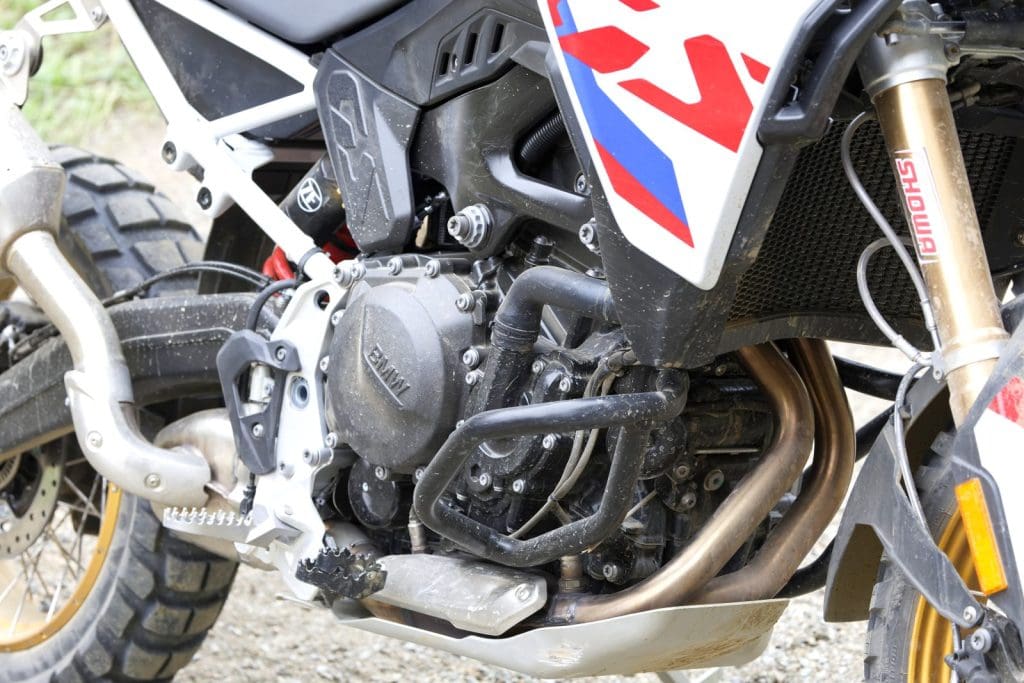
The 895cc parallel-twin engine is a gem. It’s by no means the nicest-sounding engine while idling but once on the move via the brilliant two-way quickshifter, it offers all the performance you could ask for. Freeway speeds are effortless and it will happily lift the front wheel in the first three gears when in the right mode.
The clutch is very light and the final gearing seemed pretty much spot-on.
It exhales through a beautiful Akrapovic muffler (which comes as a standard item) and has a very nice note to it, a very premium touch.
During my three days the bike returned an average fuel consumption of 5.1L/00km, which given the spirited throttle we used over the 1300km trip is pretty good. The downside is that it only has a 14.5L tank, which is perhaps the only chink in the 900’s armour. On one of my stints the low fuel level warning came on after just 218km. Sure, we were pedalling pretty hard, but this is a BMW adventure bike and the German manufacturer should know better. Range anxiety would certainly be an issue if heading into more remote parts of the country.
Ergonomically, I found the 900 perfect for my 180cm height when either sitting or standing. The seat is on the firm side but still very comfortable after big days and I didn’t suffer the cramping I have experienced in the past on some other bikes. The pillion seat exists but I get the feeling those of you who do huge kilometres with a passenger may choose the flagship R 1300 GS, which is much bigger and more accommodating for riding two-up (and has a 19L fuel tank).
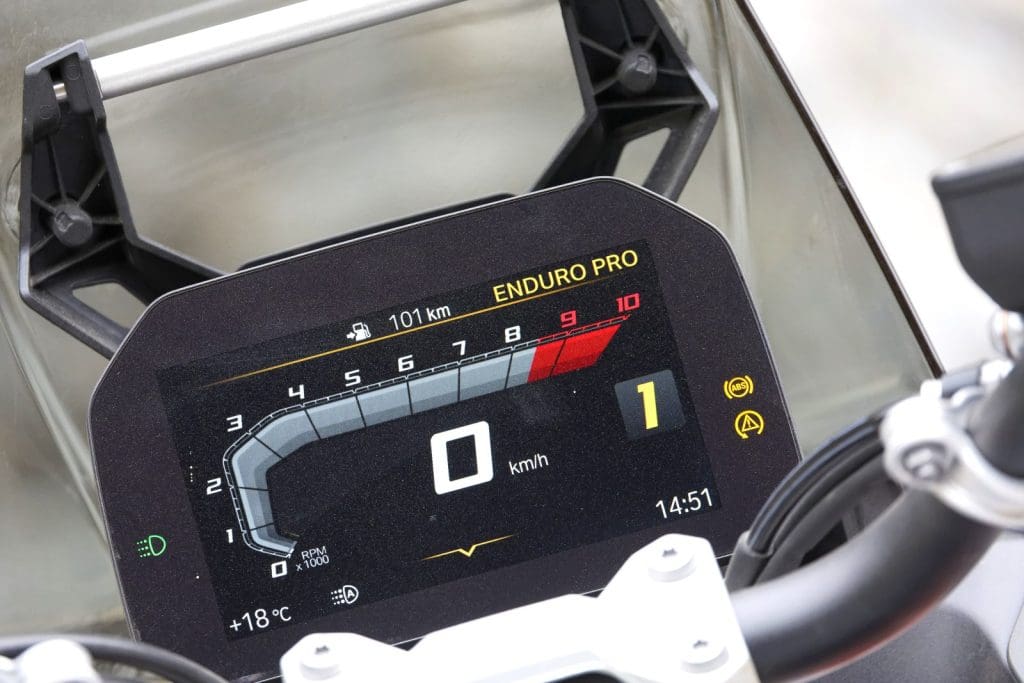
Heated grips are standard and have three settings. I would go as far as to say they are the best I’ve ever used. The hottest option will not only warm through wet gloves but actually dry them as well, while the mildest was just perfect for the cool morning we left Tamworth.
The footpegs are nice and wide, and offered very good grip, while the rear brake pedal features a design that enables it to be flipped up and locked into a position allowing for better off road feel while standing.
Because the area around the rear subframe is very uncluttered, the 900 is a very easy bike to throw a leg over.
There will be ample space for a multitude of pannier or soft bag options. The bike I rode was fitted with a waterproof tank bag, a genuine item that was on the small side but perfect for a phone, wallet and key fob. (Call me old fashioned, but give me a conventional key any day – I don’t want to have to worry about it vanishing out of a pocket or storage area while riding, but that’s just me.)
Wind protection around my legs and lower body was genuinely good, however I did cop some buffeting around my head. The screen is non adjustable and quite small, but part of the problem was probably due to my choice of apparel. I wore my Arai motocross helmet with goggles as I don’t own a specific adventure-style lid. A more streamlined helmet would no doubt catch less air under the peak and reduce the buffeting I experienced. It wasn’t too bad, but could definitely be improved.
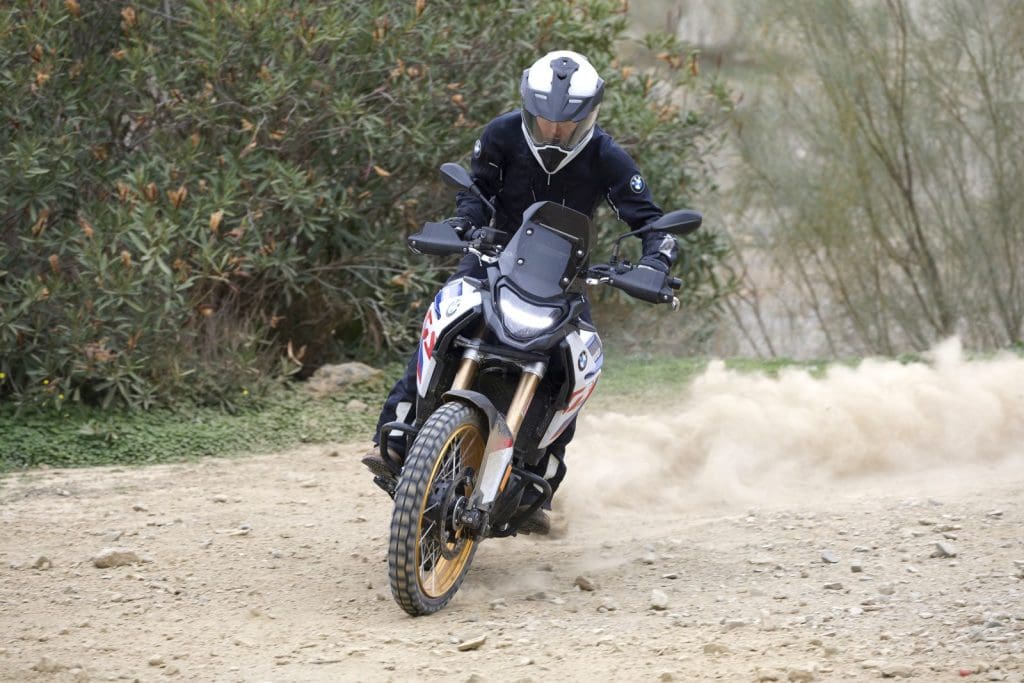
Protection-wise, you are provided with sturdy handguards that also keep your hands relatively dry. On our trip they also did a great job of protecting my hands from rocks coming off the rear tyres of bikes as I did my best to keep Davis in sight.
The engine has some reasonable protection with the water pump, oil filter and sump all hidden nicely by an aluminium bashplate.For peace of mind, I would like to see a more substantial unit fitted and I’m sure there will be many aftermarket options. It’s one area that all manufacturers tend to skimp on a little. Having said that, I’m sure it will do the job for 90 per cent of owners and if a rider like Miles Davis hasn’t broken it, I highly doubt I would either.
I had a lot of fun on this bike. It does what BMW says it should and does it very, very well. It’s a tough crowd to walk into and pick a fight, but I’ll be honest and say I reckon the KTM 890 Adventure R is a marginally better bike for the really rough stuff. But as an all-round, do-it-all and do-it-well mid-capacity adventure mount that’s competitively priced, the BMW F 900 GS may well be the new benchmark.
PROS: A do-it-all, mid-capacity adventure model that could be the new benchmark in this market segment.
CONS: Fuel tank is limiting factor if you are planning a big trip. Also look at increased crankcase protection options.
WORDS: CHRIS JONES PHOTOS MATT HAYMAN & BMW MOTORRAD
THE LINE-UP
I SPENT my time on the BMW F 900 GS Enduro, which is the halfway point between the F 900 GS Adventure and the top-tiered F 900 GS Adventure Ride Pro. It’s a far more niche model targeted at a specific type of rider who prefers dirt roads rather than tarmac.
The base-model F 900 GS starts at $19,580 (plus on-roads) and is really well appointed, as you’d expect. It’s aimed at the majority of riders who are going to spend more time on sealed backroads than trails and so has the broadest appeal.
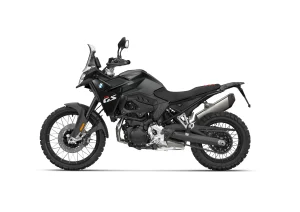
A step up is the F 900 GS Adventure (from $20,850), which comes with a 23-litre fuel tank, luggage rack, comfort seat and an adjustable windscreen.
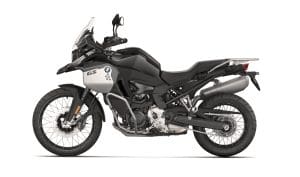
Then there is the off-road-focused $23,990 F 900 GS Enduro that I’m riding, and sitting at the top of the pile is the F 900 GS Adventure Ride Pro ($24,190).

The Adventure Ride Pro throws even more electronic goodies into the dash, as well as fog lights, a centrestand and the fasteners required to make your bike pannier ready – so plenty of options for would-be buyers.
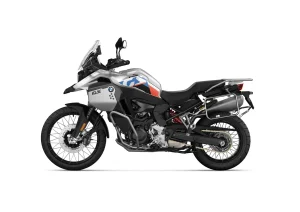
MEGA MARKET
The middleweight capacity is ruling the market these days, and it’s not just sportsbikes and their naked counterparts. A lot of brands from many countries have delved into the adventure bike scene; Austria, Germany, Italy, Japan and China all have models in this class. That’s good news for buyers as it forces these brands to stay competitive in terms of both appointments and pricing.
There’s a lot more to a good adventure bike than an upright riding position and long-travel suspension. Suspension performance is paramount off road and, while it’s not an easy task for a factory to set up a bike to suit the masses, performance across the board can range from woeful to excellent. The BMW F 900 GS Enduro is certainly on the money with brilliant on- and off-road capability. Power and torque from the 900 is right up there with the other big hitters in the category.
TECHNICAL SOAPBOX
Traction control, wheelie control, adaptive cruise control, lean sensitive ABS… when will it end? I’m all for safety but at the same time worried about the future of modern bikes in years to come – will they ride themselves? Probably.
For me one of the most rewarding things you can do is hold a slide around a dirt corner at well over 100km/h. Thankfully the option to disable traction control still lets you do this, for now. There are many riders starting our wonderful pastime later in life who will never feel a bike breaking traction due to the intervention of complex electronics. Sure, it keeps people out of hospital beds, and that’s a good thing, but is the purity of motorcycling slowly fading away?
SPECIFICATIONS
BMW F 900 GS ENDURO
ENGINE
Capacity 895cc
Type Parallel-twin, DOHC, four valves per cylinder
Bore & stroke 86mm x 77mm
Compression ratio 13.1:1
Cooling Liquid
Fueling EFI
Transmission Six-speed
Clutch Wet, multi-plate, slipper type
Final drive Chain
PERFORMANCE
Power 77kW (105hp) @ 8500rpm (claimed)
Torque 93Nm @ 6750rpm (claimed)
Top speed 250km/h (est)
Fuel consumption 5.1L/100km (measured)
ELECTRONICS
Type Not given
Rider aids Cornering ABS and traction control, Enduro Package Pro
Rider modes Dynamic, Road, Rain, Enduro and Enduro Pro
CHASSIS
Frame material Tubular steel
Frame type Trellis
Rake 28°
Trail 119.8mm
Wheelbase 1590mm
SUSPENSION
Type Showa/Sachs
Front: 43mm upside-down fork, fully adjustable, 230mm travel
Rear: Monoshock, fully adjustable, 215mm travel
WHEELS & BRAKES
Wheels Spoked aluminium
Front: 21 x 2.15 Rear: 17 x 4.25
Tyres Metzeler Karoo 4
Front: 90/90R21
Rear: 150/70R17
Brakes Brembo
Front: Twin 305mm discs, twin-piston calipers
Rear: Single 265mm disc, single-piston caliper
DIMENSIONS
Weight 219kg (wet, claimed)
Seat height 870mm
Width 943mm
Height 1393mm
Length 2270mm
Ground clearance Not given
Fuel capacity 14.5L
SERVICING & WARRANTY
Servicing First: 1000km
Minor: 10,000km
Major: 20,000km
Warranty Five year, unlimited km
BUSINESS END
Price $23,990 (plus on-road costs)
Colour options Black Storm Metallic, São Paulo Yellow or Light White / Racing Blue Metallic / Racing Red
CONTACT www.bmw-motorrad.com.au
